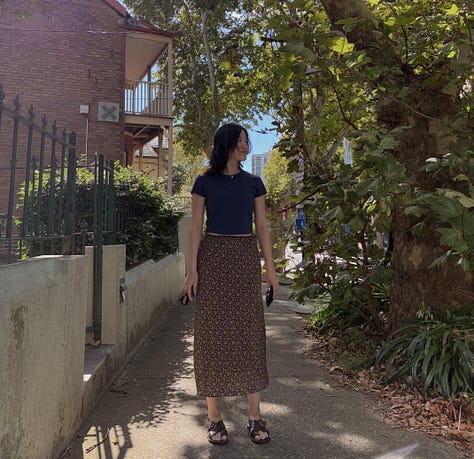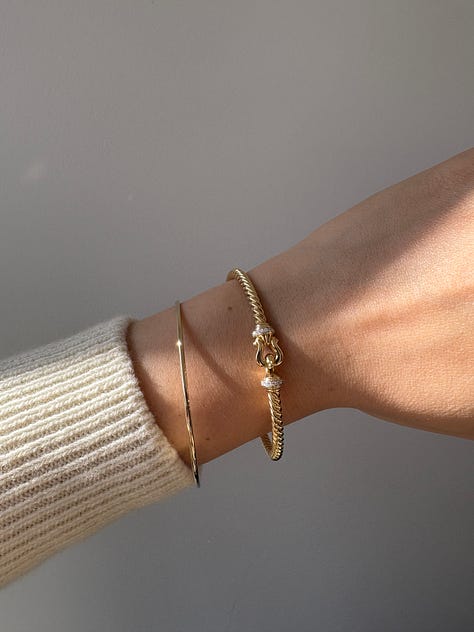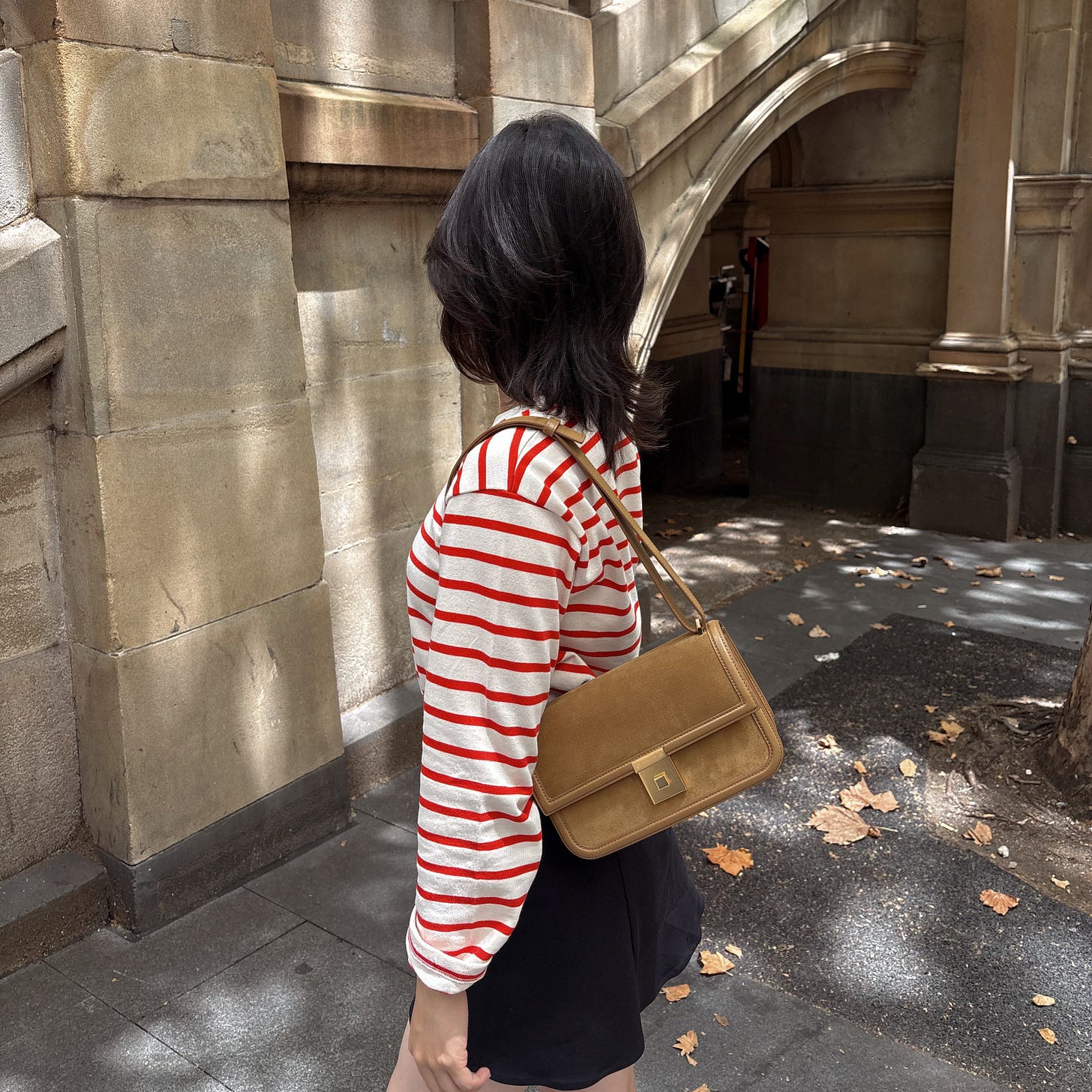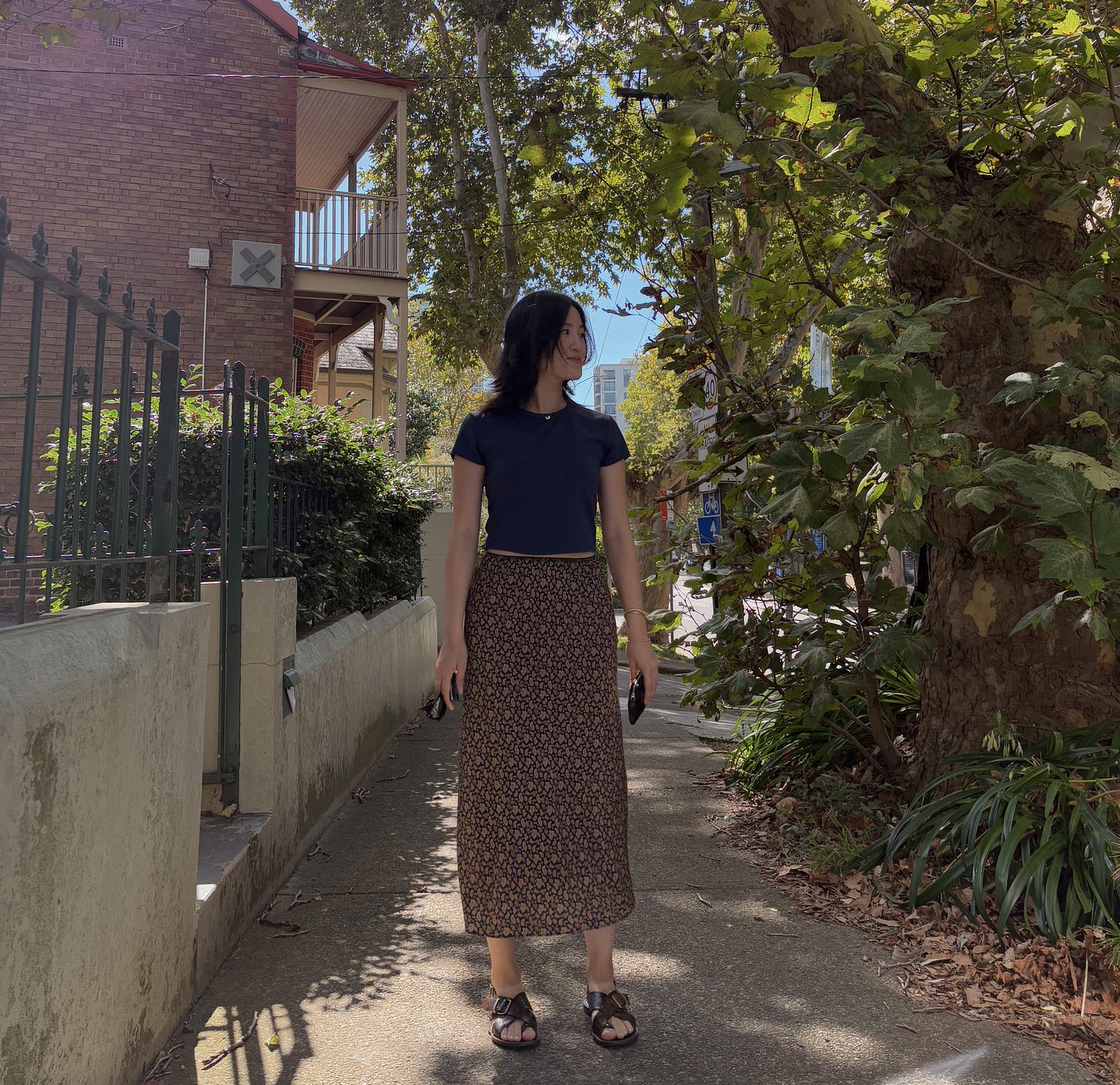What NOT To Buy For Your Wardrobe: Fabric & Materials
From 100% polyester to wools and linens, here are some fabric compositions I would avoid (from experience)
I’m always looking at the composition tag of clothing. Not just to check whether it’s a natural fibre, but to see whether the fabric composition and function match.
It’s easy enough to avoid synthetics in clothing. I’ve copied my mum in doing this since my late teens and early 20s. She worked a few years at a clothing factory and it only takes her a few seconds to lay eyes on an item to know if the fabric is right.
The issue I repeatedly run into is more nuanced. Sometimes natural fibres can be deceptive. The fabric itself may be promising, however when matched with the wrong design, a clothing piece can be both impractical and difficult to style.


Avoid: Base knits in synthetic fibres
Instead: Opt for merino wool knits
With next to skin knitwear, I always skip on anything made from a non-wool fibre (e.g. polyester or viscose). The reasons are very simple. Wool knitwear is insulating on skin, antimicrobial and resistant to odour. This means I can easily get up to 3-5 wears from a next to skin wool knit. A viscose, nylon or acrylic alternative may only last 1 wear before wash.
My favourite is merino wool. It’s soft on skin, priced reasonably compared to cashmere alternatives, and is widely available. My favourites are the Uniqlo merino knits which I’ve worn for 4+ years. I have one in navy and wear it as a base layer frequently in winter. In this case, the Uniqlo merino knit is also half the price of the Dissh alternative!



Avoid: Choosing the wrong wool fibres and designs
Instead: Choose fibres based on your lifestyle and climate
In my search for high quality knits, I often come across alpaca. Alpaca is an extremely high quality fibre that is often said to be 3-5 times warmer than wool. As a girl living in Australia, most of the time, this is an impractical choice given it’s warmth.
I seriously question the practicality of alpaca knits when the design does not suit the fibre. I'm talking about short sleeve alpaca sweaters and lace design knits (with holes) made in alpaca. The image on the right of a sage green alpaca blend knit makes the most sense as it uses the warmth of alpaca to create a versatile knit for winter. Alpaca knits can offer a lighter, more airy look as it doesn’t need to be bulky to be warm.
Avoid: Flimsy silk and linen
Instead: Choose fabrics that offer drape and good movement
One of my many clothing pet peeves is when clothing brands produce linen or silk garments using the thinnest (or cheapest) material they could find. A lot of silk bias skirts are ultra thin. Thin to the point where they don’t drape well. Sadly it’s because the silk is so light that it borders on flimsy and cheap. In some cases, I would recommend the viscose/recycled option (Sezane Sandy skirt) as it lasts longer, is lower maintenance and ultimately looks better on without hugging every detail on the body.
At it’s best, linen improves with wear and washing. At it’s worst, linen looks thin, wrinkly and messy. Make sure you consider the gsm of linen as high quality linen (e.g. Not Perfect Linen on Etsy) makes clothing at about 200gsm. While linen is by nature casual, thicker linen is more versatile and can be styled up to look more polished for everyday.
Avoid: Dry clean only viscose
Instead: Choose viscose sparingly when properly researched or opt for hand washable alternatives
Viscose is a regenerated fibre that can be difficult to care for. It’s usually recommended to hand wash viscose with cool water. Sadly, even then, some viscose materials still shrink about 20% when carefully washed. I avoid all viscose pieces that need to be washed after every wear e.g. white viscose, or tops that need more washing.
In the past, I’ve attempted to hand wash dry clean only viscose with some luck. However, it’s unpredictable. Even when following instruction, there are times where the fabric shrinks beyond repair. This is a fabric I’m extremely careful about when purchasing and will only do so with reviews and recommendation.
The worst experiences I’ve had are with Reformation viscose dresses. I stay away from all their dresses with viscose.
Avoid: Gold plated rings and bracelets
Instead: Opt for gold filled or solid alternatives. Fewer and better.
I’m 100% in my jewellery era. But going all the way back, jewellery was my first love. We wear school uniforms here in Australia so jewellery was the way to accessorise your everyday look. Especially with rings and bracelets, durability is key and most plated items will not hold up.
Something I learnt years ago is that gold plated is not standardised. It’s usually a thin layer of gold over metal. Whereas, when jewellery is labelled gold filled, there needs to be at least 5% gold. A layer of gold is bonded over metal with heat and can last up to 10 years. The good thing here is that I often see gold filled pieces (e.g. this cuff from Etsy) at reasonable prices and in line with gold plated items I see in stores.
When it comes to choosing solid gold pieces, know that you’ll get the best value when you purchase vintage or antique jewellery pieces. My favourite stores on Etsy for solid jewellery are Lillicoco and EnjoyFrenchJewelry.











I’m loving your substack! It’s so valuable not only for a fashion lover but also a sewist and slow fashion lover. Thank you for everything you’ve posted. This post in particular has made me really think better about my fabric choices and pairing them with my projects. Thank you!🙏
I didn’t realize you were on Substack! I often feel like I need to take notes since your videos are chock full of great advice. Love the newsletter format though I’ll still be following on YouTube.